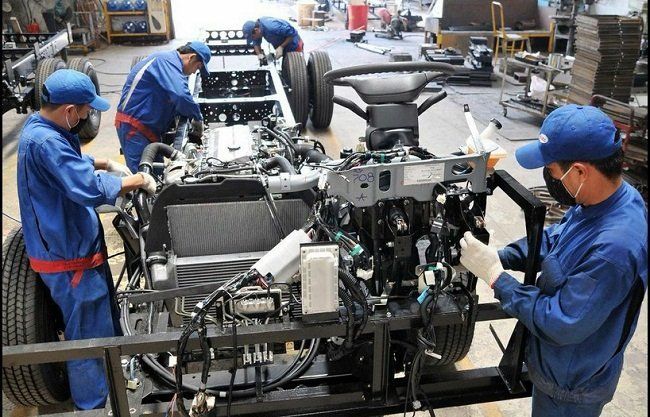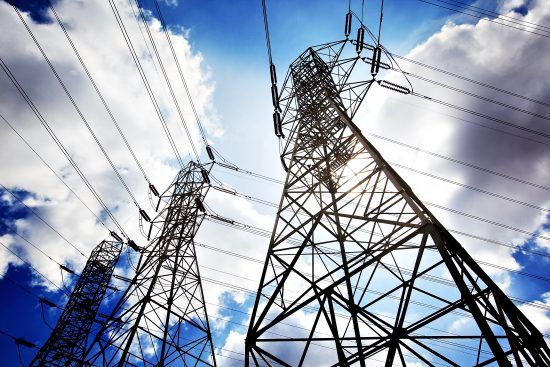SECTORS OF THE GLOBAL ECONOMY

Agriculture / Forestry
Agriculture continues to play a vital role in both Europe and Asia, though its share of employment is declining as economies diversify. Globally, about 916 million people worked in agriculture in 2023, representing 26.1% of total employment. Asia accounts for the largest share, with hundreds of millions employed, while Europe has a much smaller proportion—around 8.7 million people in 2020, or 4.2% of EU employment. This highlights the stark contrast between the two regions in terms of agricultural workforce size. Europe's agricultural industry is supported heavily by France, as its main exports include wheat, rapeseed, rye, and triticale, earning the spot of the second-largest exporter of goods to the United States. China has started to expand its agricultural ventures to Europe, North America, and Oceania. ChemChina’s $43-billion acquisition of Syngenta, a Swiss farm chemical and seed company, Shuanghui International's purchase of U.S.-based Smithfield Foods, and China National Cereals, Oils and Foodstuffs Corporation’s purchase of two major agricultural trading companies—Noble Agri and Nidera. Chinese companies have also acquired companies or formed joint ventures in New Zealand and Australia, focused on meeting China’s growing demand for dairy, beef, and lamb. READ MORE

Entertainment Tourism
Entertainment and Tourism: The Asia-Pacific region has seen a strong rebound in tourism following the COVID-19 pandemic. According to the Pacific Asia Travel Association (PATA), international visitor arrivals reached 647.9 million in 2024, representing a 91.9% recovery compared to 2019 levels. Under a medium-growth scenario, arrivals are projected to grow to 813.7 million by 2027. This recovery has been driven by improved connectivity through expanded airline routes and infrastructure upgrades, simplified visa processes such as China’s visa-free transit expansion and Thailand’s “Six Countries, One Destination” initiative, and digital transformation trends like mobile payments and social media-driven travel, which are fueling outbound travel from India and Southeast Asia. China is expected to reclaim its position as the leading inbound destination by 2027, with Japan, Türkiye, and Hong Kong SAR among the fastest-growing markets.
Globally, the travel and tourism sector contributed US$11.1 trillion to GDP in 2024, accounting for 10% of the global economy and supporting 348 million jobs worldwide—surpassing pre-pandemic employment levels. International visitor spending reached US$1.89 trillion, while domestic spending hit US$5.4 trillion, both near or above 2019 peaks. These figures underscore the sector’s resilience and its critical role in global economic recovery. READ MORE

Energy / Mining
Europe: The Russian invasion of Ukraine in 2022 accelerated Europe’s transition away from Russian fossil fuels and toward renewable energy. By 2024, renewables accounted for 46.9% of EU electricity generation, up from 34% in 2019, while fossil fuels fell to a historic low of 29%. For the first time, wind and solar together surpassed fossil fuels, generating 30% of EU electricity in the first half of 2024 compared to 27% from coal and gas. Wind power grew by nearly 10%, and solar by 20%, supported by favorable conditions and capacity additions. Hydropower also rebounded after years of drought, helping renewables exceed half of the EU’s power mix.
Fossil fuel generation dropped sharply, with coal output falling by 24% and gas by 14%, driving a 17% overall decline in fossil-based electricity. This structural shift reduced EU power sector emissions to less than half their 2007 peak and cut reliance on imported gas, saving billions in energy costs. Electricity demand, which had slumped during the energy crisis, rebounded slightly by 0.7% in 2024 but remains below pre-crisis levels. READ MORE

Defense / Security
Europe: NATO remains a cornerstone of transatlantic security, originally formed in 1949 as a collective defense alliance against Soviet aggression. After the Cold War, NATO adapted to new missions, including counterterrorism and crisis management. Following the 9/11 attacks, NATO invoked Article 5 for the first time and deployed forces to Afghanistan. Today, NATO faces unprecedented challenges amid Russia’s full-scale invasion of Ukraine and growing global instability. At its 75th anniversary summit in Washington in July 2024, NATO welcomed Sweden as its newest member and reaffirmed its commitment to collective defense. Defense spending among the 32 allies surged by 18% in 2024, and NATO launched Steadfast Defender 24, its largest exercise in decades, to strengthen deterrence and readiness on its eastern flank. READ MORE

Financials / Investments
Europe:
Europe’s economy has stabilized after the energy shock triggered by Russia’s invasion of Ukraine. Inflation fell to 2.5% in 2024, down from double-digit highs in 2022, while GDP growth remained subdued at 0.8% for 2024, with projections of 1.3% in 2025. The European Central Bank (ECB) began cutting interest rates in mid-2024 after a period of aggressive hikes, lowering the deposit rate from 4.00% to 3.00% by December 2024, and signaling further easing in 2025 as inflation trends toward its 2% target. However, tight lending conditions and weak private consumption continue to weigh on growth, raising concerns about prolonged stagnation despite falling energy prices and improved supply chains. READ MORE

Healthcare/
Pharmaceutical
The COVID-19 pandemic exposed significant vulnerabilities in healthcare systems worldwide, including those in Europe and Asia. Both regions have since accelerated reforms aimed at strengthening resilience, expanding coverage, and modernizing infrastructure to better prepare for future health crises.
In Europe, most countries maintain universal healthcare systems, either fully tax-funded or through social insurance models. Nations such as Sweden, Finland, Norway, and Iceland provide comprehensive free healthcare, while others like Austria, France, and Germany operate two-tier systems combining public coverage with optional private insurance. Recent reforms across Europe focus on reducing barriers to access, improving affordability, and adapting to demographic shifts, particularly aging populations and the rising prevalence of chronic diseases.

Manufacturing
Manufacturing in the Western world has faced structural challenges for decades, and the trend continues. Europe’s manufacturing sector remains under pressure, with industrial production in the EU falling by 2% in 2024, following a 1.4% decline in 2023. Germany and France—the region’s industrial engines—have seen persistent contractions, driven by high energy costs, weak global demand, and competition from Asia. Germany’s manufacturing output dropped 10 percentage points below pre-pandemic levels by late 2024, while France managed modest growth in pharmaceuticals and food production but still faces headwinds in automotive and machinery sectors. Rising input costs and supply chain disruptions linked to the Russia-Ukraine war have compounded these challenges, forcing European firms to rethink energy sourcing and invest in automation and green technologies to remain competitive.

Real Estate
Property prices around the European Union have resumed growth after a period of correction. According to Eurostat, house prices in the EU rose by 5.4% year-on-year in the second quarter of 2025, following modest gains in 2024 after two quarters of decline in 2023. This recovery has been supported by easing inflation and interest rate cuts by the European Central Bank and the Bank of England in mid-2024, which improved financing conditions for buyers and investors. Despite these positive signs, the market remains cautious due to lingering geopolitical risks and structural supply shortages in major cities. READ MORE

Retail
The retail industry in Europe was one of the highest and most important industries, accounting for 11.5% of EU value added and employing nearly 30 million people. After severe disruptions caused by COVID-19 and the Russia-Ukraine war, the sector has shown signs of recovery. Retail sales in the EU grew by 1.0% year-on-year in August 2024, with non-food products up 1.7%, although foot traffic in physical stores remains below pre-pandemic levels. Overall, the European retail market expanded by around 5% in 2024, led by retail parks and experiential shopping centers, while vacancy rates declined across most asset types, signaling resilience despite inflationary pressures.

Technology
Europe’s technology sector has grown into a global powerhouse over the past decade. The ecosystem’s value surged from $560 billion in 2015 to $3.2 trillion in 2024, driven by strong venture capital flows, talent expansion, and innovation in fintech, AI, and climate tech. Venture capital investment in European startups reached $52 billion in 2024, stabilizing after pandemic-era volatility and positioning Europe as a leading hub for early-stage funding. Cities like London, Berlin, and Paris remain top destinations for tech investment, supported by robust infrastructure and policy initiatives under the EU’s Digital Strategy. READ MORE

Telecommunications
The internet has permanently transformed global communication, enabling real-time connectivity across borders and revolutionizing how individuals, businesses, and governments interact. Today, more than 86% of the world’s population owns a smartphone, making mobile devices the primary gateway to digital services, financial inclusion, and social connectivity. Smartphones have evolved beyond simple communication tools into platforms for commerce, education, and healthcare, particularly in emerging markets where traditional infrastructure is limited.READ MORE

Utilities
Europe: Utilities such as electricity, heating, and water remain essential to the quality of life across Europe. Most EU citizens enjoy near-universal access to these services, supported by strong regulatory frameworks and infrastructure. Under EU law, households have the right to be connected to electricity networks, and vulnerable consumers cannot be disconnected even if they cannot pay their bills. However, rising energy prices during the recent energy crisis exposed affordability challenges, with monthly utility costs ranging from €115 in Helsinki to €370 in Munich, making Germany and the UK among the most expensive regions for basic utilities. READ MORE